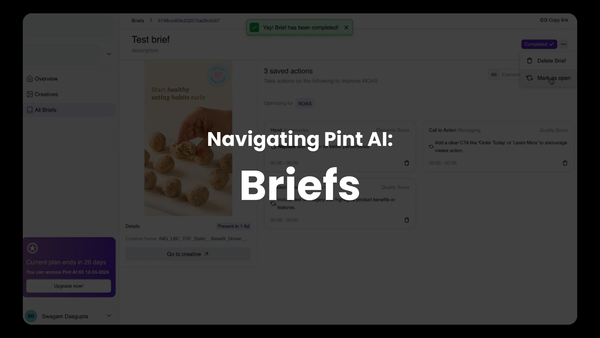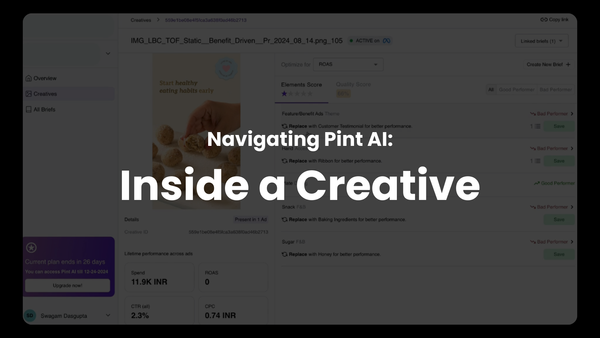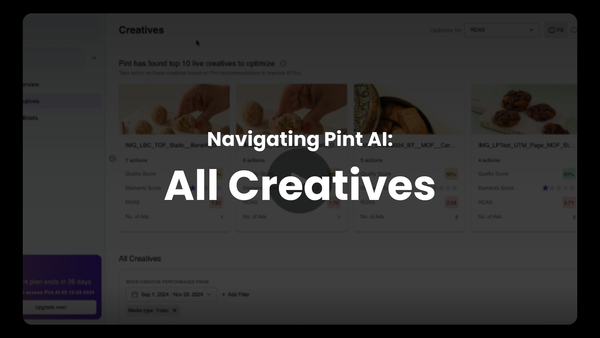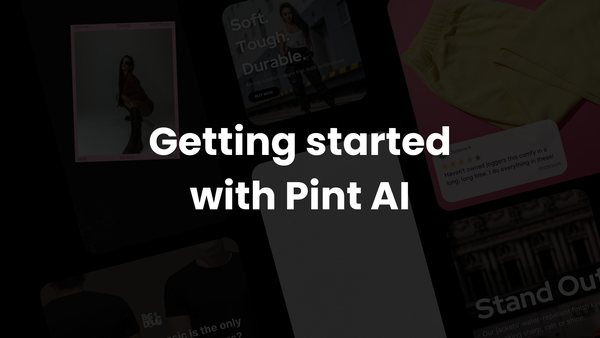Creative Analytics 107: The Right Mix of Neuromarketing & Creative Analytics
Neuromarketing findings can be tested and verified using creative analytics. Here's how.
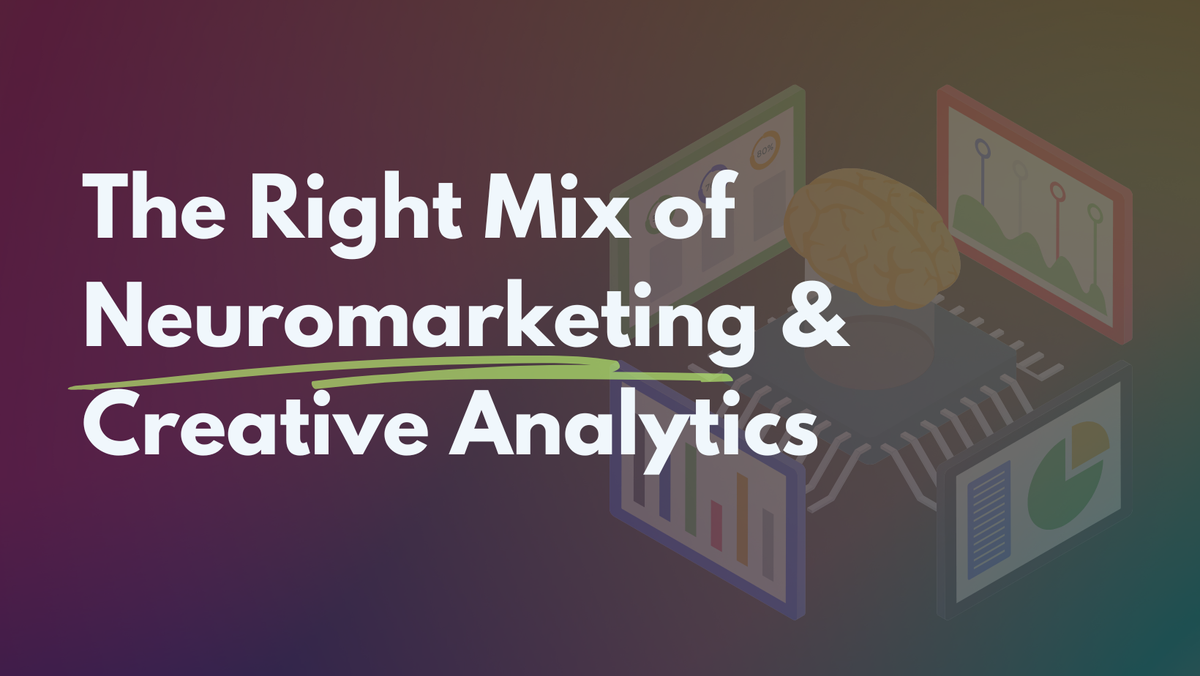
Welcome to part two of this series on neuromarketing and creative analytics. In part one, we looked at the fundamentals of neuromarketing and how they intersect with digital marketing in general.
In this part, we'll go over some popular findings of neuromarketing, understand how to use them and figure out how creative analytics can play a key role in this process.
Popular Neuromarketing Findings & How to Use Them
1. Emotional Triggers:
Emotions play a crucial role in memory and decision-making. Ads that evoke strong emotions (e.g., joy, surprise, fear) are more memorable and engaging.
- Application: Select or create ads that are likely to evoke strong emotions.
- Implementation: Use video content that tells compelling stories or uses emotional appeals. Test different emotional tones to see which resonates best with the target audience.
2. Attention and Focus:
Eye-tracking studies show that people focus more on faces, bold colors, and moving objects in ads. This helps in directing viewers' attention to key elements such as branding and call-to-action buttons.
- Application: Design ads with visual elements that capture attention.
- Implementation: Ensure key messages and CTAs are in high-attention areas identified through eye-tracking studies. Use bold colors and dynamic visuals to draw attention.
3. Decision Fatigue:
Too many choices can overwhelm consumers, leading to decision fatigue. Simplifying options can increase conversions, as demonstrated in studies showing higher purchase rates with fewer options.
- Application: Simplify choices in ads to prevent overwhelming the audience.
- Implementation: Offer a few clear options rather than many, and highlight a primary CTA to guide consumer decisions.
4. Loss Aversion:
People are more motivated by the fear of losing out than by potential gains. This is effectively used in marketing tactics like "limited time offers" to drive urgency and conversions.
- Application: Use urgency and scarcity tactics in ad copy.
- Implementation: Incorporate phrases like "limited time offer" or "only a few left" to create a sense of urgency and prompt immediate action.
5. Memory Retention:
Repetition and unique elements (e.g., distinctive colors, unusual imagery) enhance memory retention of ads.
- Application: Use repetition and unique design elements in ads.
- Implementation: Ensure brand logos and key messages are repeated across multiple ads and use distinctive visuals that stand out.
6. Social Proof:
People are influenced by the actions and endorsements of others.
- Application: Create UGC ads that show the experience of using a product or service.
- Implementation: Incorporate quotes and testimonials from real users or highlight diverse user experiences to appeal to a broader audience.
Where does Creative Analytics fit in?
Now that you know some foundational neuromarketing principles, and are geared up to apply them, what's the next step?
It's obvious — testing.
You have to test the assumptions that you're making, drawing from neuromarketing findings, to see if they can really impact your creative and ad performance.
For example, let's take the example of Loss Aversion. You have two ads, one with a very clear "limited time offer" indication, and another without this. Remember, you must keep all the remaining variables the same — you're only testing whether including a limited time offer in your ad's language makes a difference.
Once you've launched both these creatives, that's where creative analytics steps in. Using creative analytics tools like what we're building at Pint AI, you'll be able to track not just both these creatives, but the very element itself, i.e, limited time offer.
What does this mean? Suppose you have hundreds of ads with limited time offer and hundreds of ads without this or with other loss-aversion techniques, you can compare the performance of all ads with limited time offer versus the others.
This can give you a first indication of just how effective this element — limited time offer — is. You should be able to track the average ROAS, CTR, CPM, Spend and other core metrics for this element alone. And if it's doing better (or worse) than your account average, then voila! You have a first real sense of whether this element works or not.
Compare with Caution
Now it's easy to say that your limited time offer ads are doing better than your account average, and so you should do more of these. But saying this is far too simplistic.
There are multiple other things to consider here, namely, in what context are your limited time offer ads doing?
- For what audience is limited time offer doing better than the others? If it's the same or similar audience across ads, then you know that for audience group A, limited time offer works better.
- What kind of campaign are you looking at when you're comparing? Are you looking at all bottom-funnel sales campaigns and testing limited time offer versus the others?
- What channels are you examining this comparison across?
- Is the budget for these ads the same?
And there are several other factors to think about. Whenever you're making a decision on whether a certain element — like limited time offer or UGC or any neuromarketing-backed hypothesis — it's important to make sure that the context across your comparisons remains the same.
It's only then that you can truly, with a decent amount of confidence, say what is performing well enough to give yours ads a boost. And this is precisely what creative analytics helps you do!
Conclusion
In this second part of our series on neuromarketing and creative analytics, we've delved into some of the most impactful neuromarketing findings and explored practical ways to implement them in your ad campaigns. By leveraging emotional triggers, capturing attention and focus, simplifying choices to avoid decision fatigue, and utilizing loss aversion and social proof, you can create more engaging and effective ads.
However, identifying and applying these principles is just the beginning. The true power lies in testing these assumptions with creative analytics. Tools like Pint AI enable you to track and analyze the performance of specific elements within your ads, providing clear insights into what works and what doesn't. By maintaining a consistent context for your comparisons, you can make data-driven decisions with confidence, optimizing your campaigns for better results.
As you continue to integrate neuromarketing principles into your digital marketing strategy, remember that ongoing testing and analysis are crucial. This iterative process will help you fine-tune your approach, ensuring that your ads not only capture attention but also drive meaningful engagement and conversions.


